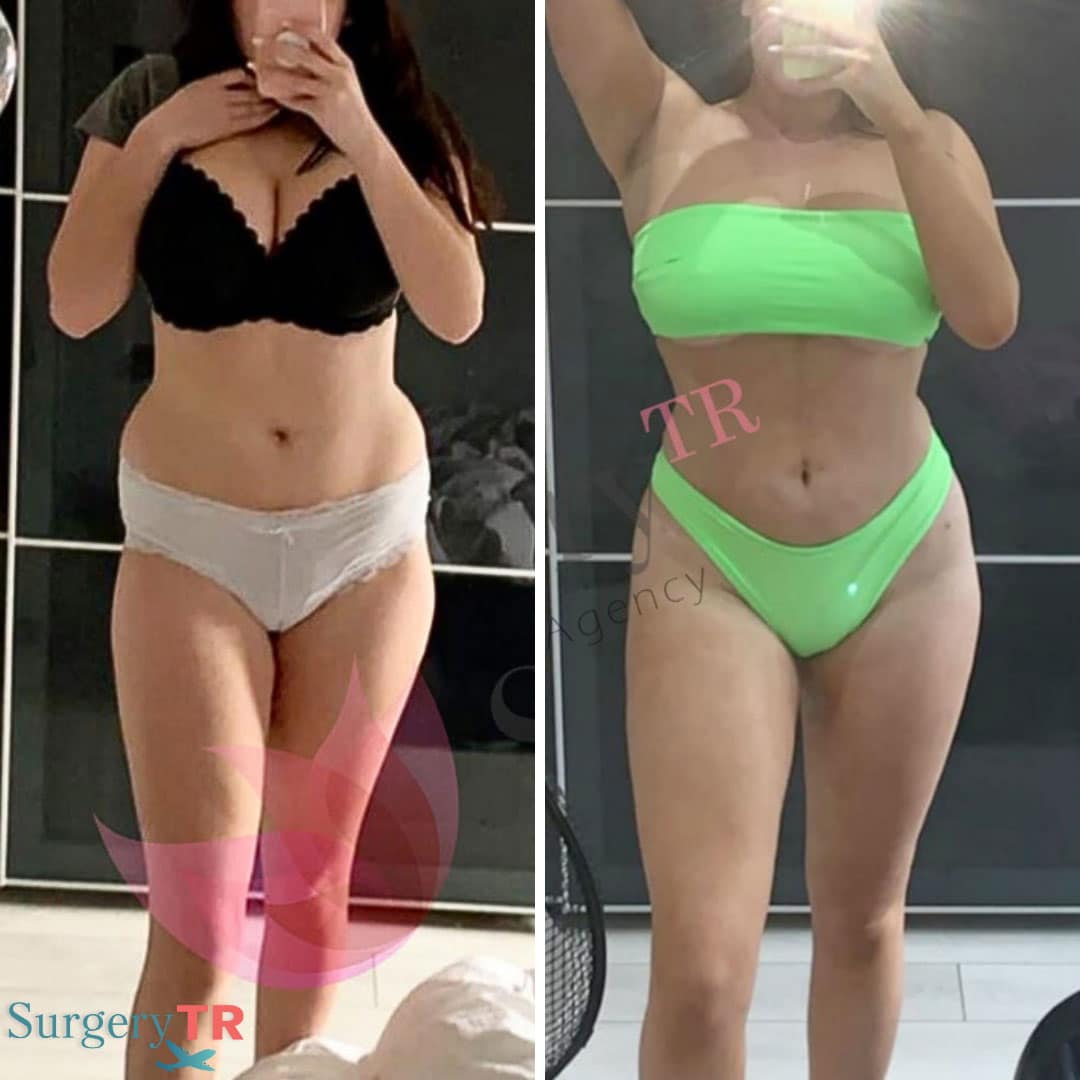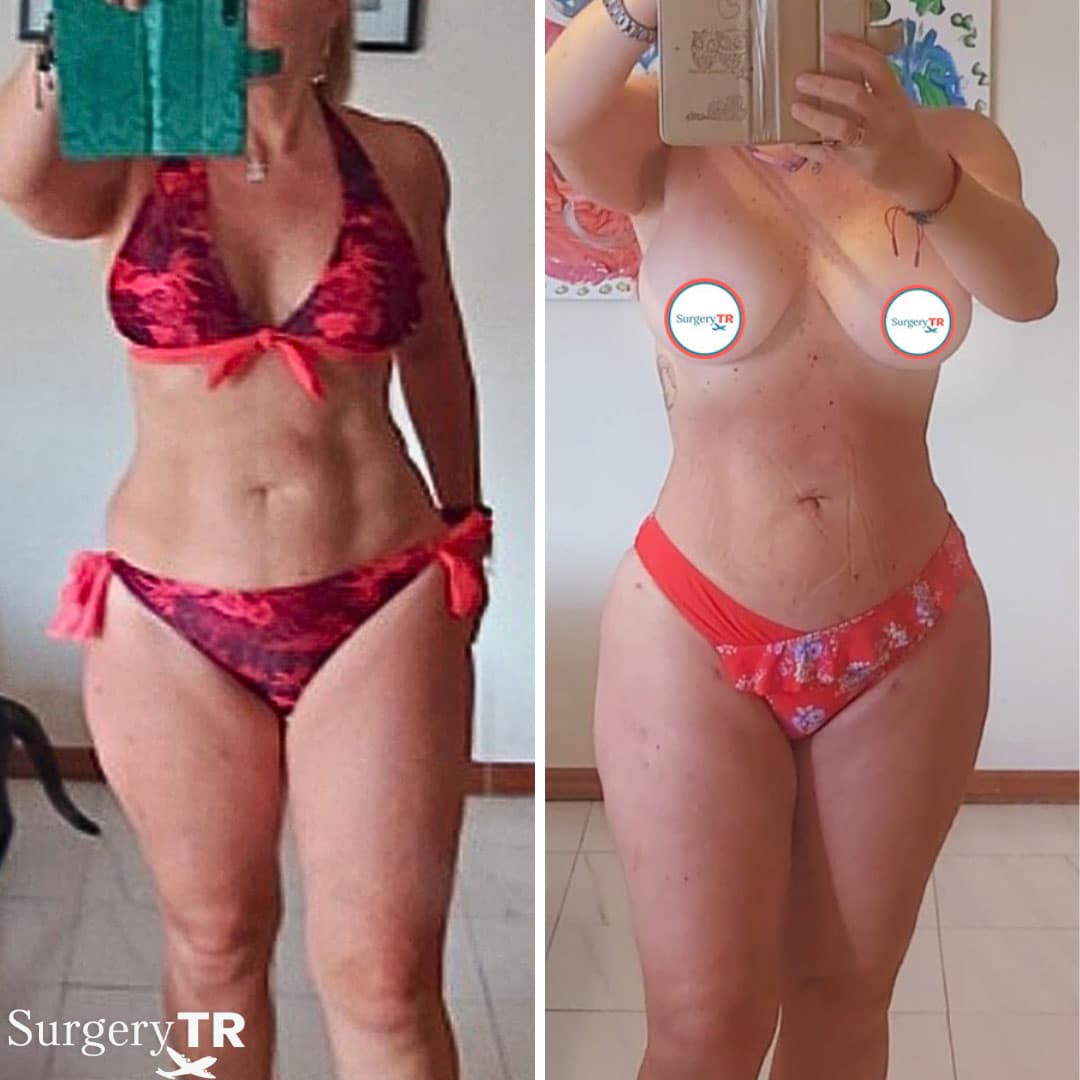Liposuction is a cosmetic surgical procedure that involves the removal of excess fat deposits from specific areas of the body through a suction technique. It is commonly sought after for body contouring and achieving a more sculpted appearance.
Liposuction surgery is one of the most popular cosmetic surgery type in Turkey.
SurgeryTR as an awarded company, provides all the latest liposuction techniques (Vaser, Laser, J Plasma, Smart Liposuction) and contracts with experienced doctors who have highest patient satisfaction rates. Surgery TR offers all inclusive Liposuction Packages including exclusive hotel accommodation, all transfers in Turkey, medication, compression garment etc. You will be welcomed at the airport and accompanied during all your appointments during your stay in Turkey. You can book your free video consultation with Surgery TR contracted doctors and get your questions answered directly.

 SurgeryTR has given priority to patient satisfaction and has shown special care to its patients since 2016. Due to the high-quality services, SurgeryTR was awarded as a Best Health Tourism Company and won Patient Service Awards.
SurgeryTR has given priority to patient satisfaction and has shown special care to its patients since 2016. Due to the high-quality services, SurgeryTR was awarded as a Best Health Tourism Company and won Patient Service Awards.  SurgeryTR is aware of the difficulty of getting treatment abroad and provides you with an All-Inclusive Package with no hidden cost. So, you don’t encounter any extra costs during your medical journey, you know what you paid for.
SurgeryTR is aware of the difficulty of getting treatment abroad and provides you with an All-Inclusive Package with no hidden cost. So, you don’t encounter any extra costs during your medical journey, you know what you paid for. SurgeryTR provides Free Video Consultation with your potential surgeon and you have a chance to ask all your questions and tell your expectations directly. You can discuss the type of procedure that is best for you and the results you are likely to get.
SurgeryTR provides Free Video Consultation with your potential surgeon and you have a chance to ask all your questions and tell your expectations directly. You can discuss the type of procedure that is best for you and the results you are likely to get. SurgeryTR has a 98% patient satisfaction rate according to the reviews in Trustpilot, Whatclinic, and Google Reviews. SurgeryTR welcomes many patients from the UK, Europe, USA, and Canada for more than 8 years and more than 50% referrals.
SurgeryTR has a 98% patient satisfaction rate according to the reviews in Trustpilot, Whatclinic, and Google Reviews. SurgeryTR welcomes many patients from the UK, Europe, USA, and Canada for more than 8 years and more than 50% referrals.
 SurgeryTR has given priority to patient satisfaction and has shown special care to its patients since 2016. Due to the high-quality services, SurgeryTR was awarded as a Best Health Tourism Company and won Patient Service Awards.
SurgeryTR has given priority to patient satisfaction and has shown special care to its patients since 2016. Due to the high-quality services, SurgeryTR was awarded as a Best Health Tourism Company and won Patient Service Awards.  SurgeryTR is aware of the difficulty of getting treatment abroad and provides you with an All-Inclusive Package with no hidden cost. So, you don’t encounter any extra costs during your medical journey, you know what you paid for.
SurgeryTR is aware of the difficulty of getting treatment abroad and provides you with an All-Inclusive Package with no hidden cost. So, you don’t encounter any extra costs during your medical journey, you know what you paid for. SurgeryTR provides Free Video Consultation with your potential surgeon and you have a chance to ask all your questions and tell your expectations directly. You can discuss the type of procedure that is best for you and the results you are likely to get.
SurgeryTR provides Free Video Consultation with your potential surgeon and you have a chance to ask all your questions and tell your expectations directly. You can discuss the type of procedure that is best for you and the results you are likely to get. SurgeryTR has a 98% patient satisfaction rate according to the reviews in Trustpilot, Whatclinic, and Google Reviews. SurgeryTR welcomes many patients from the UK, Europe, USA, and Canada for more than 8 years and more than 50% referrals.
SurgeryTR has a 98% patient satisfaction rate according to the reviews in Trustpilot, Whatclinic, and Google Reviews. SurgeryTR welcomes many patients from the UK, Europe, USA, and Canada for more than 8 years and more than 50% referrals.


| 🩹 Operation takes 1-2 hours. |
| 💉 It is performed under general anesthesia |
| 🏥 Possible side effects and risks are; infections, blood clots, damage to skin or nerves |
| 💪🏼 Patient can go back to work in 1-2 weeks, should wait 4 weeks for more strenuous activity |
| ❤️ If supported with diet and exercise, the result is permanent. |
The purpose of liposuction is to correct and reshape the body contour. Liposuction, also known as lipo or fat removal, is a surgical operation performed to remove unwanted body fat from different regions. Liposuction is performed on areas where excess fat is collected, such as hips, waist, chin, thighs, arms and abdomen. With a certain amount of fat removed from those areas of the body, you can have a more proportionate body appearance.Permanent fats accumulated in the body can be removed permanently with liposuction and the person can have a body shape that they want.
Liposuction aims to break down the fat cells known as adipose tissue, which is called the formation of adipose tissue under the skin.
The best method of getting rid of stubborn fat settled in the human body is to have liposuction. After the procedure, the fat tissues in the patient’s body are removed permanently and if the person maintains a constant weight, fat accumulation does not occur. The surgeon can easily shape the skin by removing the fat tissue during the surgery. In this way, the patient can have a more muscular or thinner aesthetic appearance after the operation.


There are some risks in this operation like every surgery and there are things you should consider before having liposuction with SurgeryTR.
First of all and most important one is you have to consider your decision before coming to the country and you should be certain about this decision.
You must consult your doctor, if your decision is certain your surgeon will give you guidelines about the process, in this process diet and liquor limitations can be included.
It is better to bring a friend with you to this operation as you will stay here for 4 or 5 days in Turkey. You should also consider that you can mix this operation with tummy tuck operation.
This operation is a fat removal operation and does not include tightening the skin. For that reason you can contact your doctor before coming to Turkey.
After examining your body, the surgeon decides which type of liposuction you are a suitable candidate for such as traditional liposuction or vaserliposuction.
Liposuction in Turkey has a lot of benefits and of course the most outstanding benefit of this surgery is gaining confidence again and feeling more beautiful but there are some other benefits too.
Liposuction in Turkey, provides a good body shape,
With surgeryTR you will experience an amazing trip with an amazing price,
With our excellent, expert surgeons you can be certain that you are in good hands,
Also, you will not be disappointed because at this price your medical travel insurance, hotel accommodation in 5-star hotels, all of your transfers from airport to the hotel and your local transfers with VIP car, patient host and private nurse support are included.

| You should use the medical corsets given by your doctor as instructed for a month. |
| After the operation, it is necessary to wait about 2 months for heavy and tiring sports. |
| To speed up your recovery process, smoking and alcohol consumption should be stopped. However, drinking plenty of water and fluids will increase your resistance. |
| Since the surgical sutures are self-dissolving sutures, there is no need for stitch removal. |
| You can take light-paced walks 1 week after the operation. |
| After the operation, your stitches should be protected from the sun and sweat until they dissolve. |
| You can swim in the pool and sea 1 month after the operation. |
| After the operation, the body will take its ideal shape in about 6 months. |
Surgery TR maintains all its services under the understanding of high quality, reliability, and excellent service in Istanbul and Izmir (Turkey) as a medical travel company since 2016. Surgery TR is an institution of Esmirna Turizm Travel Agency